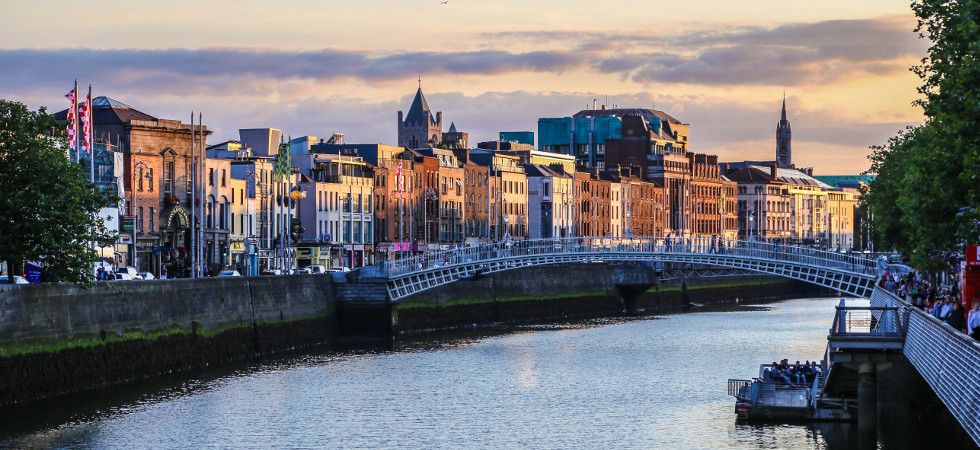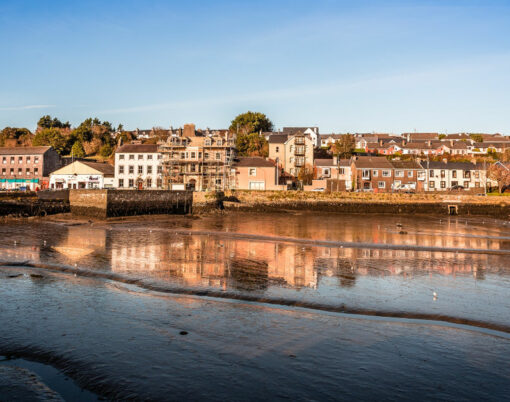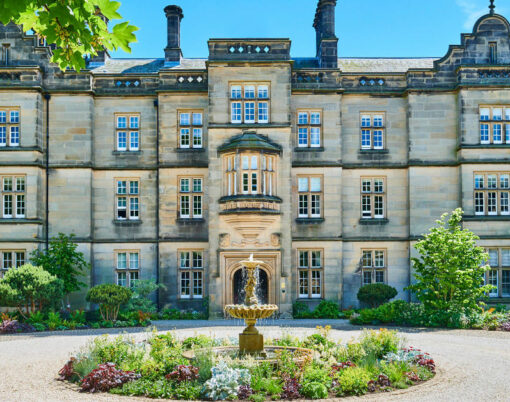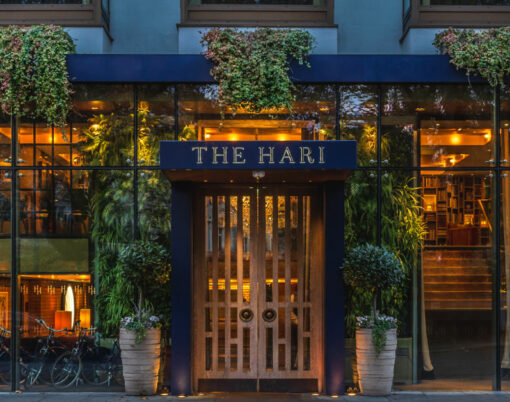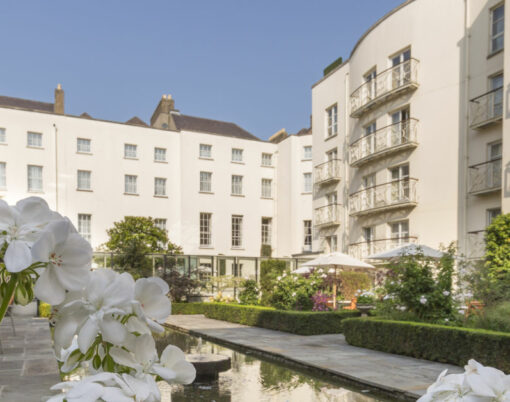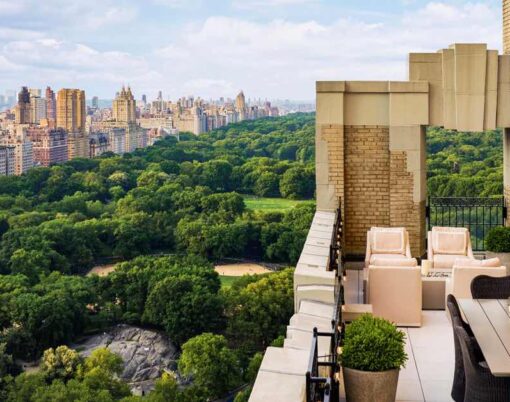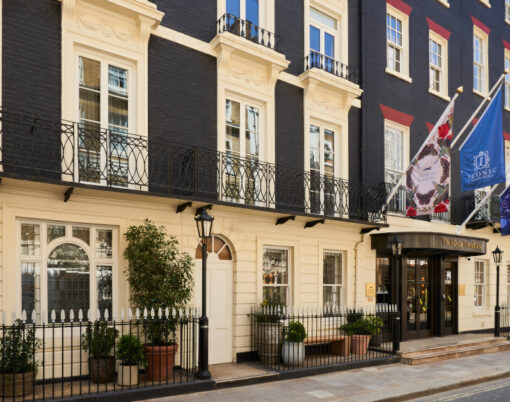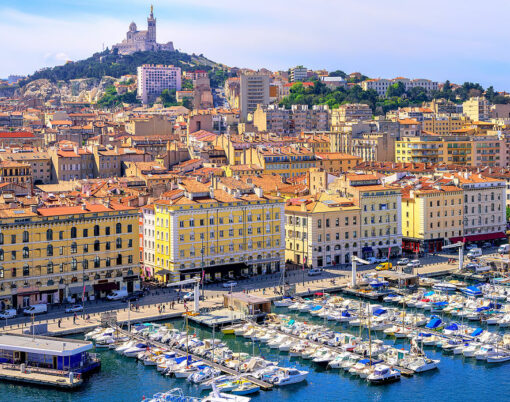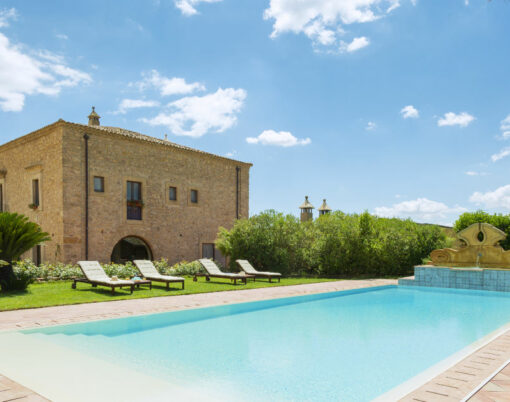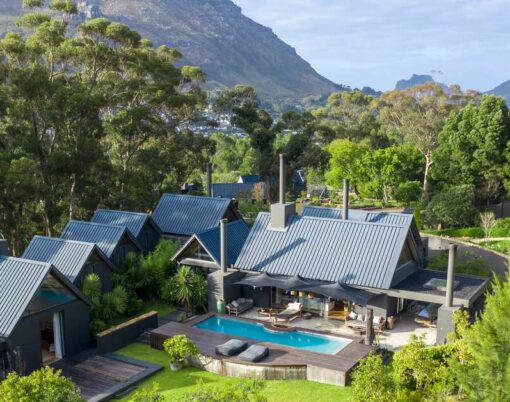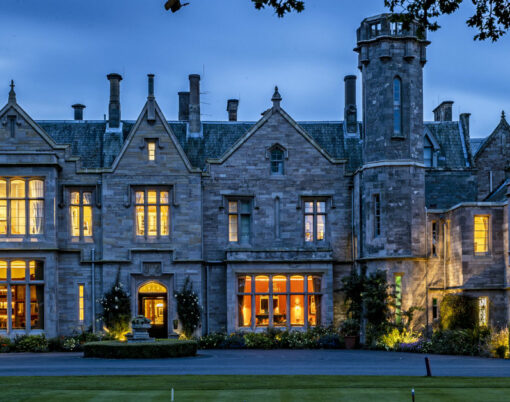Dublin, located at the mouth of the River Liffey, which flows into Dublin Bay and the Irish Sea, is the capital of the Republic of Ireland and a truly enchanting city where the locals enthral visitors with an infectious sense of humour and an exuberant zest for life.
Dublin was once a Viking settlement and became Ireland’s major city following the Norman invasion, and prior to the Act of Union in 1800 Dublin was the British Empire’s second major city. In 1922, after the division of Ireland, it was recognised as the capital and today attracts millions of visitors keen to experience a little Irish charm.
To appreciate Ireland’s greatest cultural treasure head for Trinity College, located on College Green in the centre of the city, and view the Book of Kells; the world’s most famous medieval manuscript. Permanently displayed in the college’s magnificent Old Library, dating back to the 18th century, the elaborately decorated 9th century Book of Kells is a beautiful illuminated copy of the four Gospels of the New Testament and it is an absolute masterpiece.
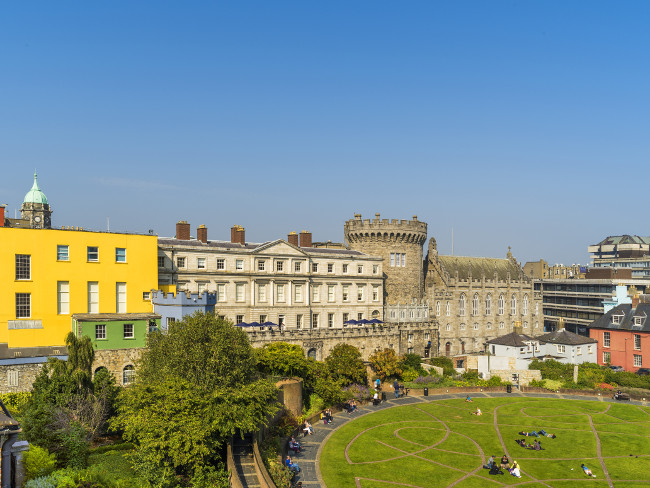
To view another of Ireland’s medieval treasures take the short stroll along to Christ Church Cathedral, which dates back to 1030 and was founded by Dúnán, the Norse king and first bishop of Dublin. During the Victorian era the building underwent extensive renovations and even today it is difficult to distinguish between those parts which are medieval and those that have been restored. Nevertheless, the striking building is clearly one of Dublin’s gems and offers much to be admired. The crypt, which is open to visitors, is the largest in England and Ireland, and constructed from 1172 to 1173 it contains a number of fascinating riches including a set of candlesticks and a tabernacle, which were used in 1690 when King James II fled England, sought refuge in Ireland and set about defending his throne. During this time he attended High Mass in the cathedral and the ornate interior reflects Dublin’s rich and colourful history.
For ardent culture vultures, Dublin’s Castle is a short stroll away on Dame Street. In fact, the city of Dublin gets its name from the Black Pool – ‘Dubh Linn’ – which was once part of the castle’s garden. The castle stands on the ridge of a strategic site at the junction of the River Liffey and its tributary the Poddle, where, it is said, that the original fortification may have been an early Gaelic Ring Fort. Part of a Viking fortress, which once stood on the site, remains, and is on view to visitors at the ‘Undercroft’.
Today, visitors eager to encounter Irish hospitality gather at Temple Bar; a cosmopolitan area offering an extensive choice of galleries, restaurants, cafes, bars and shops. A leisurely stroll along the pedestrianised cobble-stoned streets is a real treat and a tipple or two in any one of the many pubs will quench the most persistent thirst. There is no shortage of charismatic characters, and whilst sipping on an Irish coffee, we were serenaded with a rendition of ‘I’ll take you home again Kathleen’ and another local risked breaking a limb with his idea of ‘what real Irish dancing should be and not what that young whippersnapper Flatley has exported’!
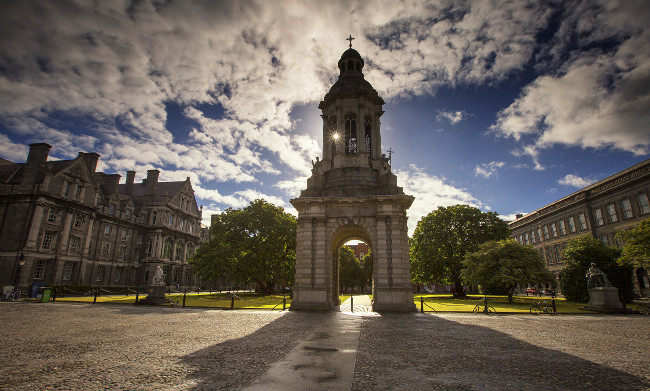
Should all that frivolity take its toll, a tranquil spot for ‘al fresco’ dining can be found at Carluccio’s, located on Dawson Street. The service is excellent and the linguine pasta with squid, mussels and prawns with garlic, herbs and chilli is delicious. After a glass of Gavi Delfini Piemonte we were ready to continue with our exploration of the city.
Another of Dublin’s most popular sites is the Guinness Store House, which attracts more than a million visitors every year. The ‘black stuff’, dates back to 1759, when Arthur Guinness signed a 9,000-year lease for an annual rent of £45 for the disused brewery at St James’s Gate. The world renowned Irish stout is made of water, barley, hops and yeast and visitors are welcome to ‘pull the perfect pint’ following precise instructions from a Guinness representative. The glass must be held at a 45 degree angle and the pourer must wait for an exact period of 119.5 seconds before topping off the froth. Be sure to visit the Gravity Bar and perhaps partake in a refill whilst admiring the panoramic view of the city in between sips.
Clear your head with a brisk walk along O’ Connell Street, named after the 19th century nationalist Daniel O’ Connell, leader of the movement for Catholic emancipation. This will lead you to the O’ Connell bridge spanning the River Liffey and the promenade known as Batchelor’s Walk, which leads to the charming Ha’penny Bridge. Built in 1816, it is known as the Ha’penny due to the half-penny fee pedestrians once paid for crossing it.
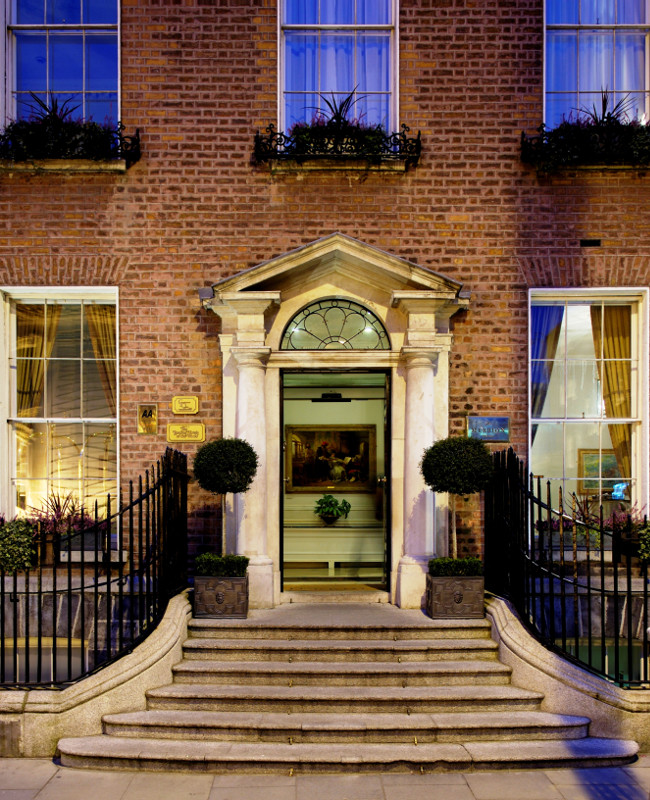
For a real treat for all the family make your way to Dublin Zoo, which opened in 1831. The zoo is a registered charity, which is focused on raising awareness to threatened species and it generates essential funds for conservation. Located in Phoenix Park, it is home to over 400 animals including a pride of Asian lions, Asian elephants, giraffe, rhino, gorillas, chimpanzees and orang-utans. The daily feeding times attract children and ‘grown ups’ alike with many squealing in delight at the antics of the sea lions and penguins. Another treat was in store when we stopped off for a bite at the zoo’s famous Meerkat’s Restaurant. Whilst dining, we became aware of a family of inquisitive meerkats peering at us through a large glass wall and a lasting mutual fascination ensued.
There is a wide choice of hotels in Dublin but for those seeking outstanding levels of comfort and service, the luxurious Merrion Hotel, birth place of the 1st Duke of Wellington, is just the ticket. The property consists of four inter connected Georgian town houses and is located in the city centre on Upper Merrion Street. We opted for the spacious and stylishly furnished Lord Monck suite, which offers a gorgeous view of the landscaped 18thcentury style gardens, and features original rococo plasterwork with a curved, boat-shaped ceiling adorned with elaborate motifs of flowers and birds. The king size ultra comfortable bed swathed in crisp Egyptian linens ensured a deep slumber and we took advantage of the comfortable seating area after arduous days spent exploring the city. The elegant and grand Merrion Hotel reflects Dublin’s Georgian heritage perfectly and offers a relaxing retreat where guests are welcome to relax in the beautiful drawing rooms adorned with Belgian tapestries, sparkling chandeliers and priceless works of Irish art. I took a dip in the indoor infinity swimming pool and visited the steam room and the spa. For an outstanding dining experience, the hotel’s Garden Room Restaurant, presents modern Irish cuisine. I opted for the delicious succulent Irish stew, which was served with aplomb.
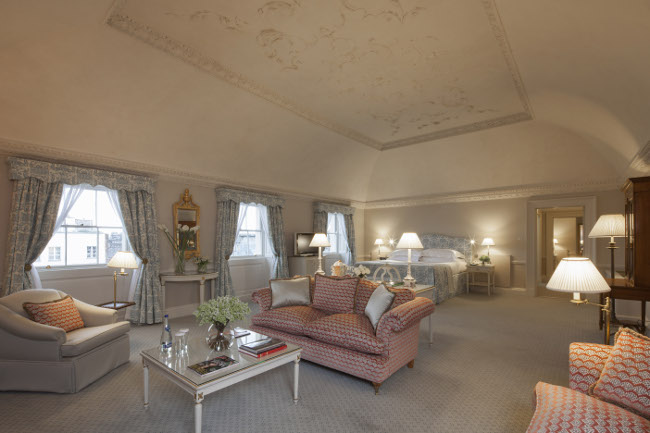
Should you wish to go a little further afield, Hugo’s restaurant is a short stroll away on Merrion Row. The service is first class and the menu is inspired. Consider sampling the slow braised South Glenn beef, served with white onion, herb mash and a Guinness purée.
And for our evening tipple we headed back to Bar No. 23 at the Merrion Hotel and relaxing in our plump comfortable chairs we ordered two flutes of champagne and raised our glasses high in solidarity to one of Ireland’s favourite sons; James Augustine Aloysius Joyce, who once said ‘When I die, Dublin will be written in my heart’.
‘Top Tip’ – flights:
To experience the warmth of Irish charm in-the-air fly Business Class from Heathrow to Dublin with Aer Lingus. Opt for Advantage, which offers priority boarding, advance seat selection and lounge access. For more information visit aerlingus.com.
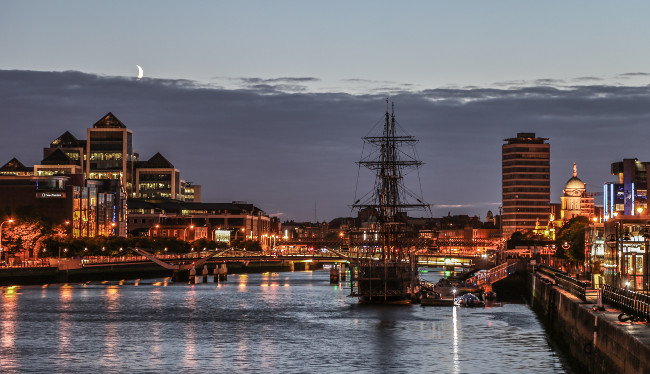
‘Top tip’ – airport transfers
Book a private transfer in Dublin with Blacklane for a reliable, punctual, first class service. Prices are all-inclusive and guaranteed in advance, so you can sit back and relax upon arrival. Visit blacklane.com for more information.












